#Goa trip from Siliguri
Text
7 Best Places to visit in India in 2020
As we all know traveling doesn’t come cheap, but you'll be glad to know that there are many places in India that make for a perfect holiday package for 2020. We have gathered 7 pocket-friendly Indian Destinations after thorough research. If you wish to gain travel experience and save big bucks you can plan a trip to these destinations in 2020.
Jaipur:
Jaipur, which is popularly called a pink city is the capital of Rajasthan. People who love exploring forts and palaces, Jaipur is the best pocket-friendly destination for you. The place is home to a number of resorts and hotels. The food here is delicious and is budget-friendly.
Best Time to Visit Jaipur: Nov-Mar
How to Reach
By Air: Sanganer Airport is the nearest airport which is well connected with all the major cities.
By Train: Shatabadi Express connects Jaipur to all the major cities.
By Road: If you are preferring road then buses by RSRTC runs on frequent intervals.
Srinagar:
Srinagar is one of the amazing places to visit in India. The gorgeous city is the home to some breathtaking lakes and features several boathouses on Dal Lake. Those boathouses can be booked at decent rates. Srinagar is popularly considered as heaven on earth. Experience its charismatic charm and natural beauty before the turmoil spoils it.
Best time to visit Srinagar : Apr-Oct
How to reach
By air: Srinagar has its own airport.
By rail: One has to reach either Jammu Tawi or Udhampur railway station, to reach Srinagar by train.
By road: The road is not a preferred way to reach Srinagar unless you are traveling from a city of Jammu & Kashmir.
Manali:
Manali is one of the magnificent places to visit in Himachal Pradesh. If you are an adventure seeker, loves Peace and nature then this is the place for you.
Best time to visit Manali: Oct-Feb
How to reach
By air: Kullu-Manali Airport is the nearest airport to Manali. It is located at a distance of about 52 km.
By rail: The nearest railway station to Manali is Joginder Nagar. It is located at a distance of about 160 km.
By road: Manali can be easily accessed by road via state-run, private buses, private cabs, or cars
Goa:
The list is incomplete without mentioning Goa. Amazing nightlife, Beach shacks, a variety of booze and cheap price. Goa is one of the best holiday packages that will make your trip memorable.
Best time to visit Goa: Nov-Feb
How to reach
By air: The major airport in Goa is Dabolim International.
By rail: Thivim Railway Station and Madgaon Railway Station are the main railway heads of Goa.
By road: Many people prefer taking a car/bike ride from Mumbai and Pune. Margao Bus Terminal, Mapusa Bus Terminal, and Kadamba Bus Terminal are best-connected bus terminals in Goa.
By Sea: You can also opt for ferry services which are an excellent way of commuting. You can take a ferry from Mumbai to Panaji and can easily reach Goa.
Sikkim:
Extremely pleasant and alluring Sikkim is one of the most breathtaking and peaceful places in India. Apart from adventure activities, sightseeing you can also go for some meditation sessions at one of the old monasteries.
Best time to visit Sikkim: Mar-June and Sept-Dec
How to reach
By air: Bagdogra Airport which is 124 km from Gangtok in West Bengal is the nearest airport.
By rail: New Jalpaiguri Railway Station in Siliguri which is 148 km from Gangtok is the nearest railway station.
By road: The cities of Sikkim are well-connected by good quality roads to Darjeeling (West Bengal)
Andaman:
Scenic beaches and crystal clear water Andaman is one of the most perfect destinations for an enjoyable vacation. There you can, go for a deep sky diving, go on long treks or laze around the backwaters of the island.
Best time to visit Andaman: Nov to mid-May
How to reach
By air: Vir Savarkar Airport in Port Blair is the major airport of archipelagos.
By sea: Ships ply between Haddo Wharf Port in Port Blair and cities Visakhapatnam, Kolkata and Chennai.
Kerala:
Thousands of tourists visit Kerala because of its picturesque places, coconut fringed beaches, colorful festivals, pristine backwaters and many more.
Best time to visit Kerala: Nov-Jan and June-Aug
How to reach
By air: Kerala has three main airports – Cochin International Airport, Calicut International Airport, and Trivandrum International Airport. These airports connect Kerala with different cities across the world, such as Chennai, Muscat, Dubai, Delhi, and Mumbai.
By rail: Kollam Junction railway station, Thiruvananthapuram Central railway station and Ernakulam Junction railway station are three major railheads of Kerala. These stations connect the state with towns and cities across India.
5 notes
·
View notes
Link
To explore the beauty of northeast India, seven sisters of India attract tourists from all across the globe. The beautiful gardens, pristine lakes, dense forests, rumbling hills, and amazing cascades are worth visiting in 2022.
#Seven Sisters of India#Seven Sisters tour itinerary#why they are called the seven sisters of India#travel guide to seven sisters of India#Meghalaya#India’s most beautiful hill stations#best time to visit Meghalaya#Manipur#India’s seven sister states#best months to visit Manipur#most beautiful places in Manipur#Arunachal Pradesh#largest of the seven sisters#greatest time to visit Arunachal Pradesh#highest point in northeast India#India’s smallest state#Tripura#most famous tourist spots in Tripura#best time to visit Assam#tourist destinations in northeast India#7 Sisters of India#Nagaland#finest time to visit Nagaland#Nagaland’s tourist attractions#Land of Blue Mountains#seven sisters of Northeast India#tourist destinations in Mizoram#seven sisters tour packages#hotel booking#hoteldekho
0 notes
Text
Top Places to visit in India in March in 2020
Marking the end of the winter season in North India, March is the perfect month to witness the blooming flowers, green tea estates or relax at the sandy beaches. We’ve got the list of best destinations you can visit in March 2020.

Goa
The sounds of beach waves or the splash of water near the coast is something anyone would love to hear. If you’re a water person, visiting Goa is the smartest move in March, not only for its soothing climate but also for Shigmo, Goa’s biggest Hindu folk festival. March is also the best time to visit Goa for those who need a break from the mad crowd of Goa.
Places to visit in Goa: Calangute Beach, Fort Aguada, Baga Beach, Dudhsagar Falls, Dona Paula
Chikmagalur
A self-contained place surrounded by green hills, Chikmagalur will instantly make you fall in love. The picturesque hill town is a little paradise much loved by couples and mountain lovers. The temperature that ranges between 25°C to 30°C from March to June makes it a must-visit place for a pleasant time.
Places to visit in Chikmagalur: Mahatma Gandhi Park, Mullayanagiri Peak, Kudurekuha Jamly, Coffee Museum
Shillong
Plan a vacation to India’s Scotland, the picturesque hill station in Meghalaya that houses many lakes, zoos, museums and golf courses. Located in undulating pine-covered hills, the capital city has a milder climate than tropical India. As the city organises several music festivals around the year, music lovers can have another reason to check out the flight offers online and book a flight.
Places to visit in Shillong: Umiam Lake, Elephant Falls, Shillong Peak, Mawsynram
West Bengal
This March, visit West Bengal to celebrate Basanta Utsav, the Bengali version of Holi. Started by Rabindranath Tagore, the master of literature, the festival is celebrated by people from all around the world. Other than the festival, the combination of arts, mountains, and nature will keep you captivated on your trip.
Places to visit in West Bengal: Sundarbans, Siliguri, Digha, Kalimpong
Pick a place and book cheap air tickets from a trusted online platform and get ready to make the most of your vacations in March.
0 notes
Text
White Spiti Expedition Part-1
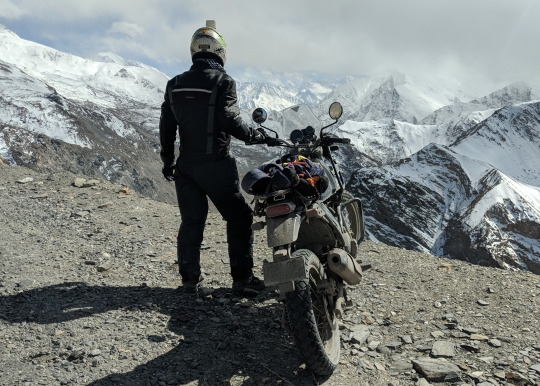

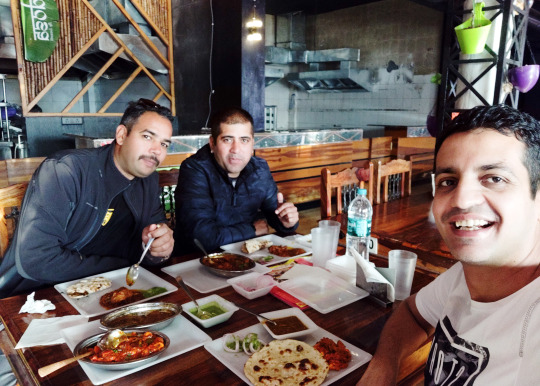
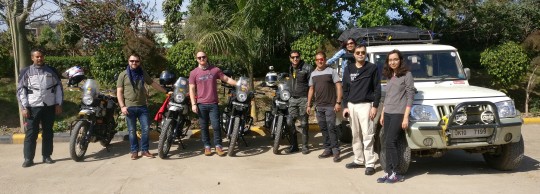
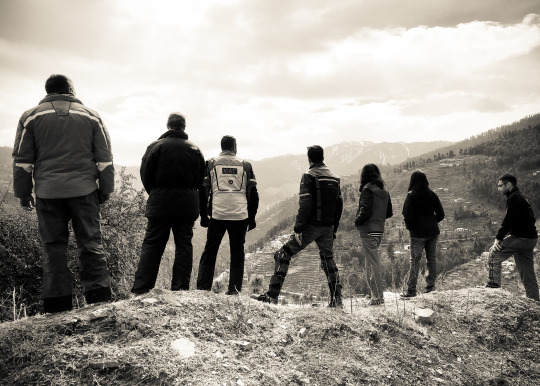
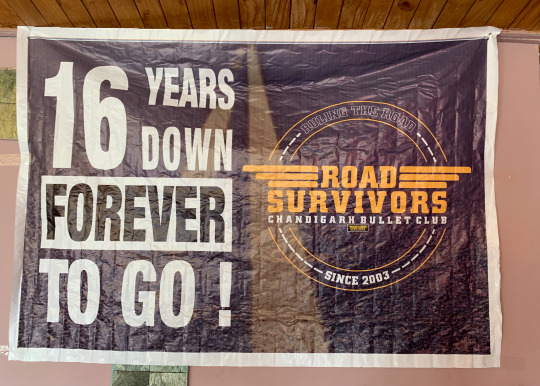
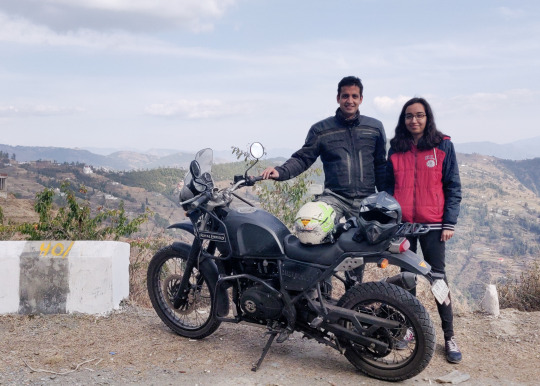
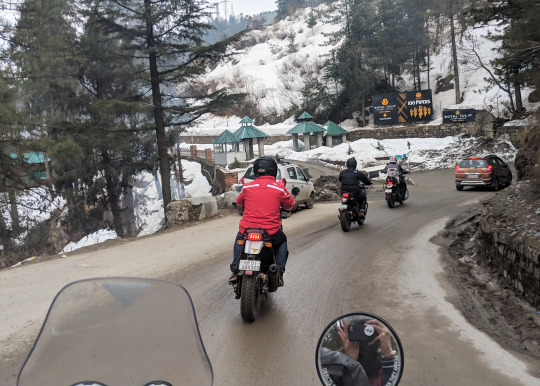
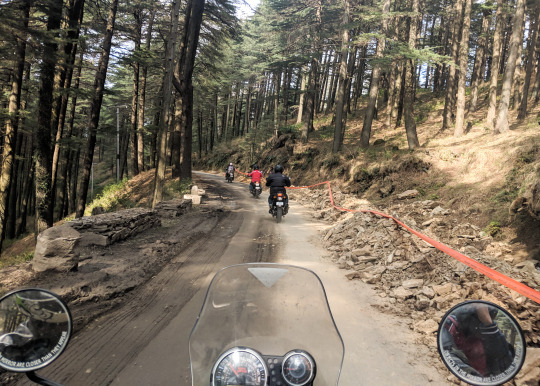
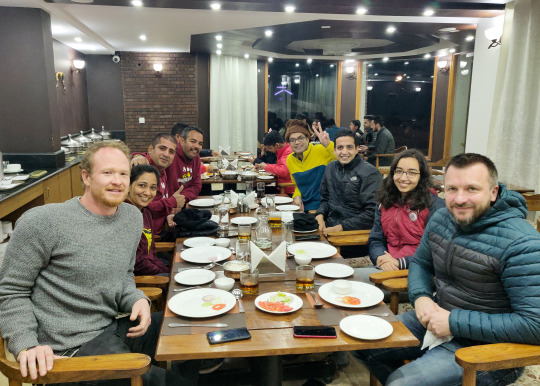
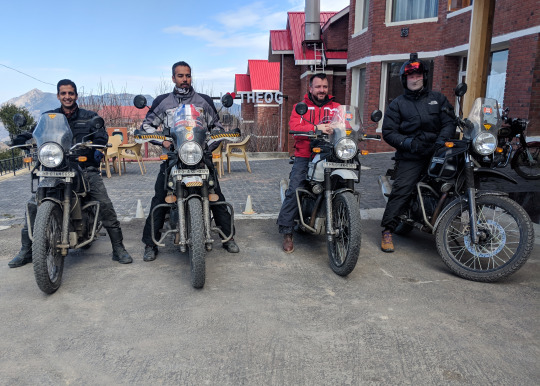
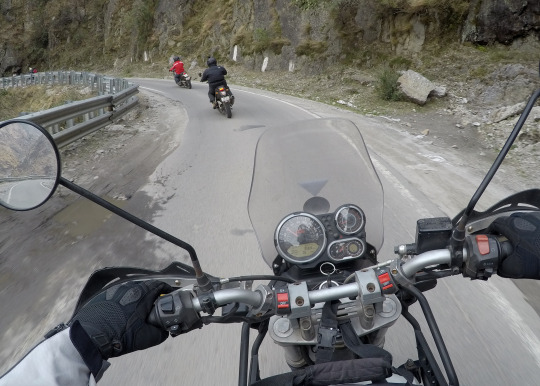
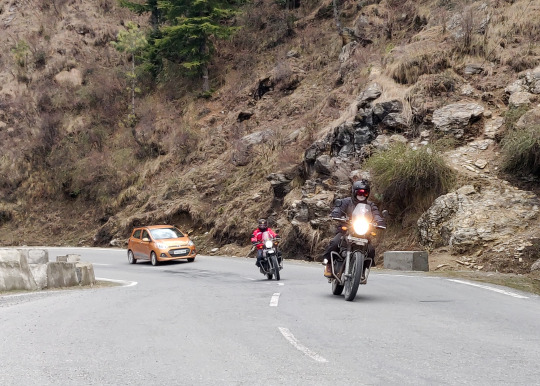



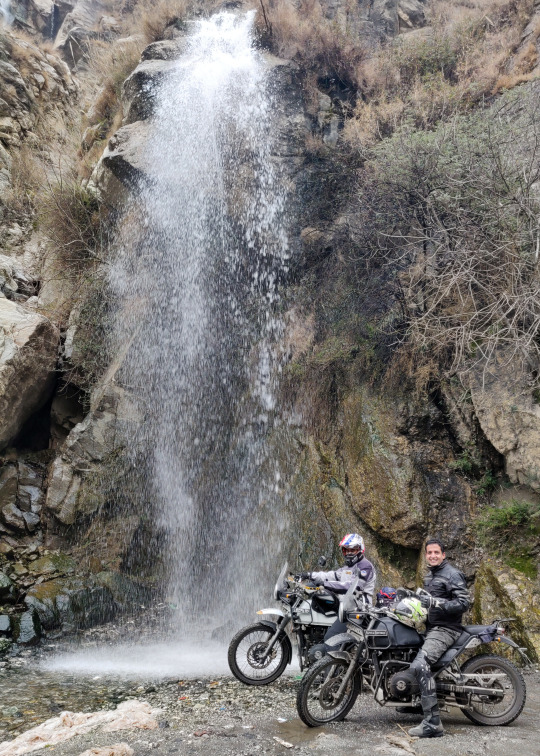

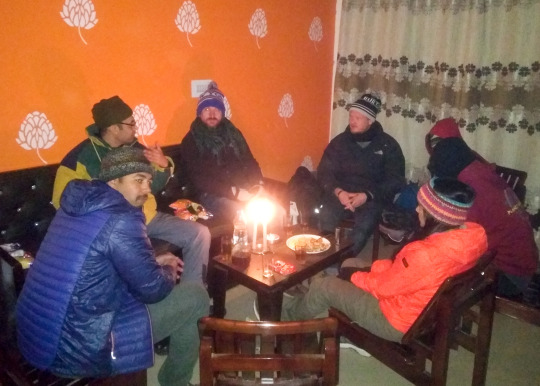

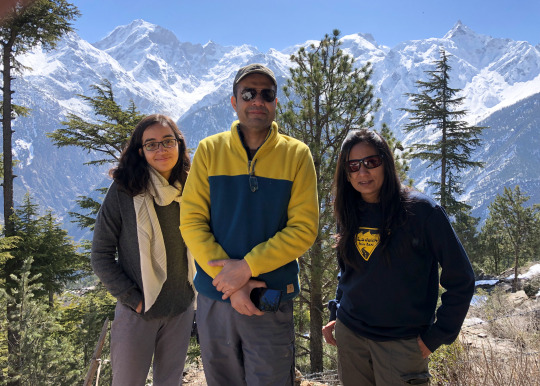
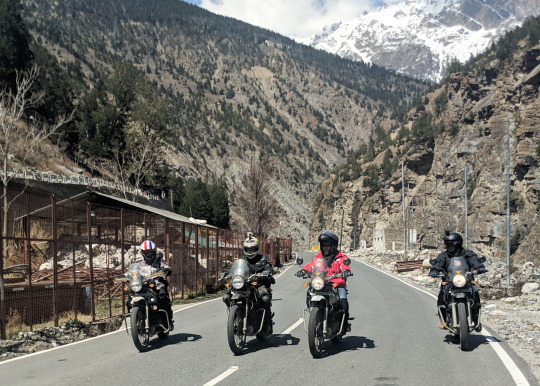
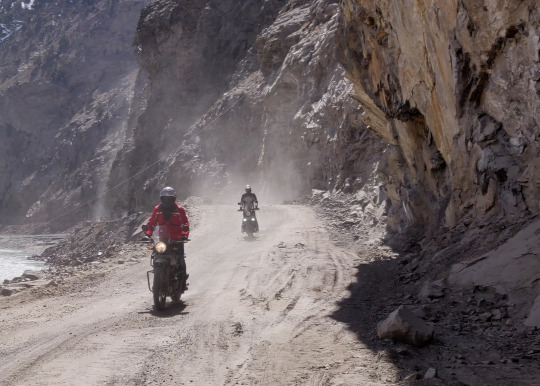
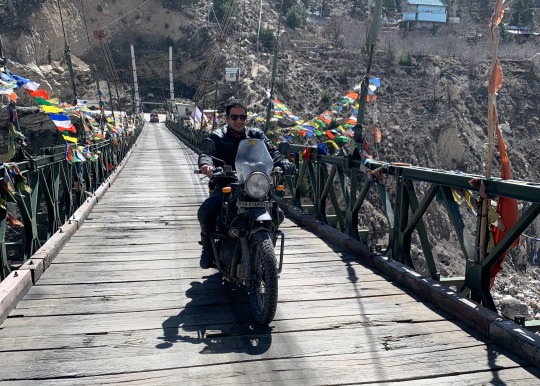
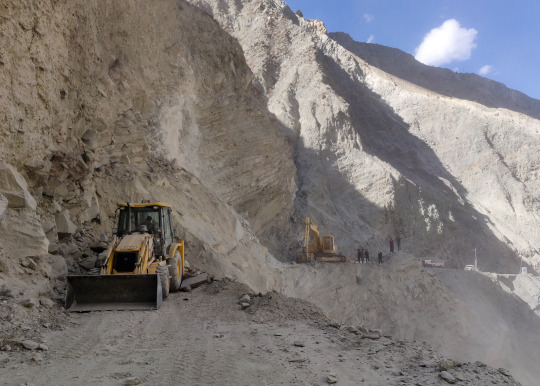

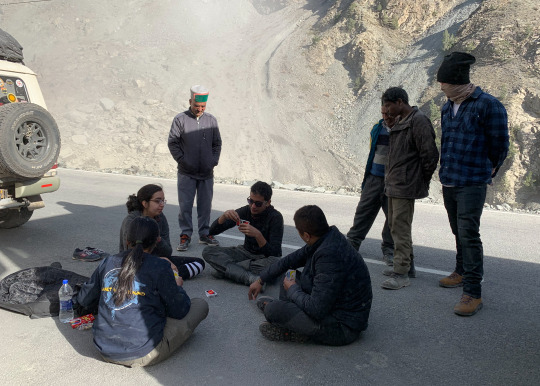

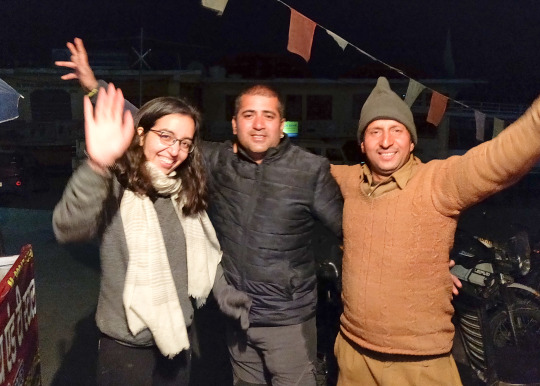

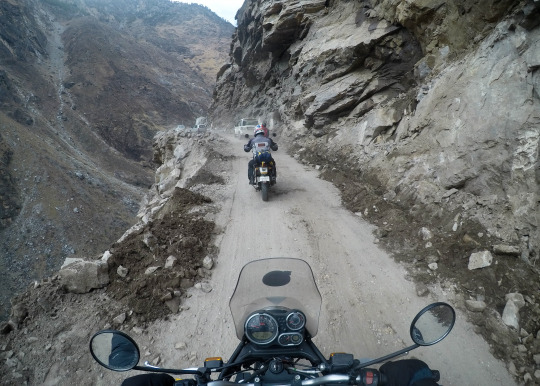
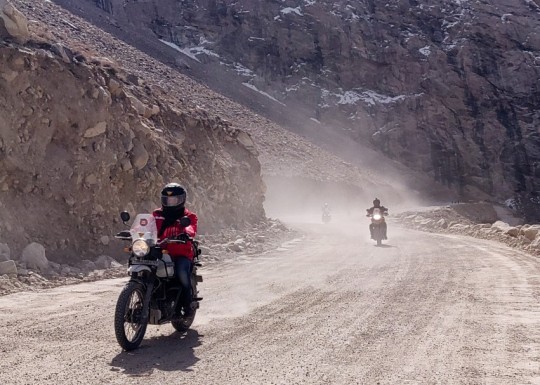
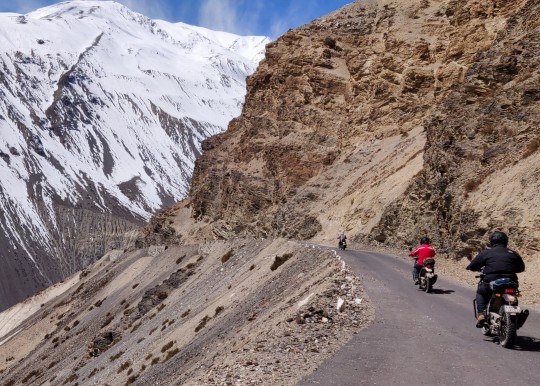
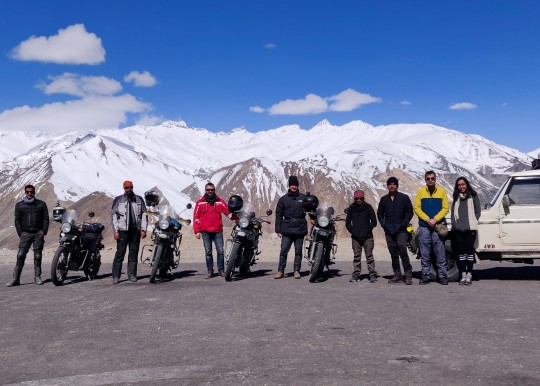




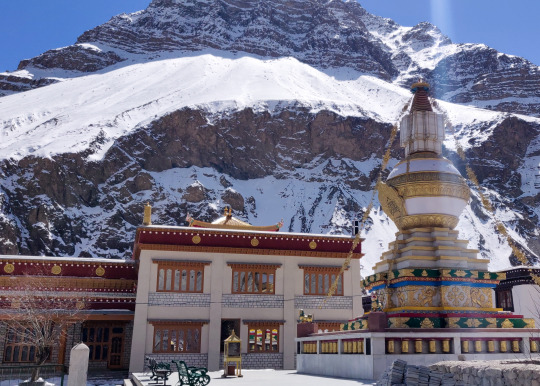

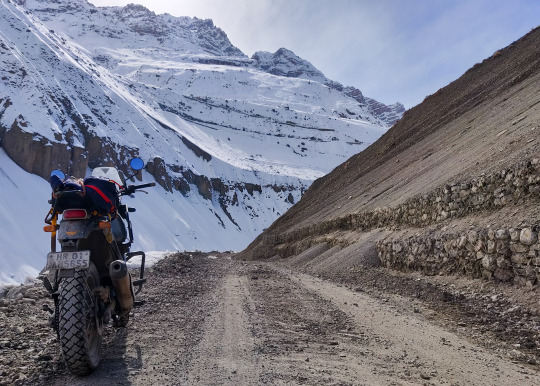
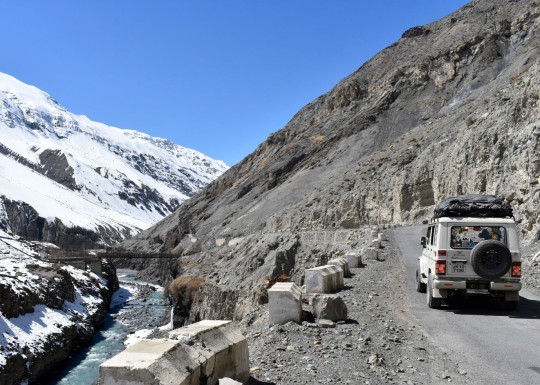

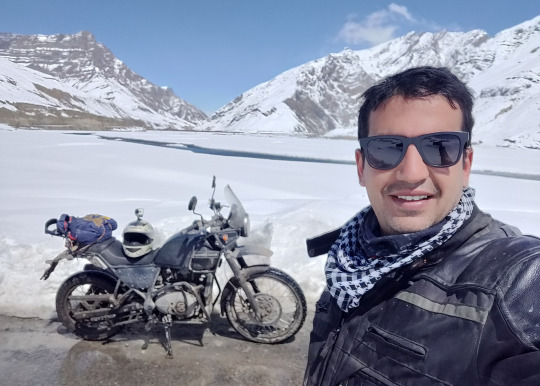
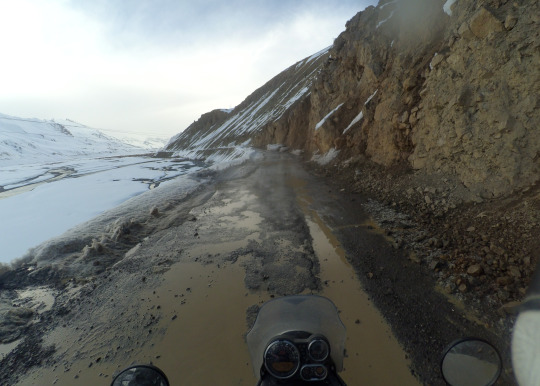
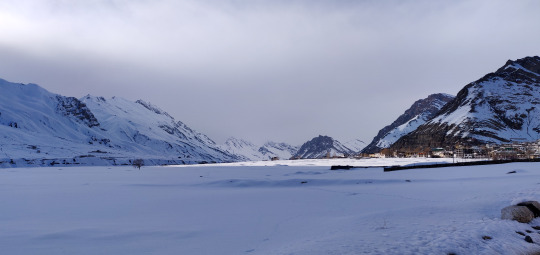

0 notes
Text
Best Trails in India To Explore on Your Mountain Bike
If you are an adventure biking enthusiast, a trip through the mountains is a must for your vacation plans. India being a country with diverse terrain, there are innumerable trails running through the length and depth of the country which are a treat for those looking to explore regions on their mountain cycle. Top cycling enthusiasts recommend certain best trails every mountain biker should explore in India and if you are keen, you should plan to take on one of these on your next vacation plan:
1.The trail starting at Manali and culminating in the picturesque Spiti Valley in Himachal Pradesh is one of the top preferences of mountain cyclists in the country for a trail in the north of the country. A significant route spanning 195 kms, the trail has a unique topography covering contrasts of barren stretchlands with green farms, and gigantic mountain ranges, crossing the Rohtang and the Kunzum Passes along the way. The trail combines some smooth stretches with tough terrain for an unparalleled experience.
2.In the eastern part of India is the beautiful and adventurous trail running from Siliguri to Darjeeling. Picture the routes featuring lush green tea gardens and coffee estates and the majestic Kanchenjunga peak along the route. You will also pass by the quaint little towns of Kurseong, Sonada and Ghoom, famed for their variety of flora which you will enjoy exploring on your mountain cycle.
3.Down south in the country is another amazing trail for mountain bikers to explore. Running from Chennai to Pondicherry which runs along the east cost of the country, this trail covers a span of 140 kms. You can cover spectacular beaches, spice gardens and forest routes which are a true delight for the senses. Given that the region is known for its oppressing humidity, be well prepared to hydrate plenty on the route.
4.On the west coast, a trail that enchants every rider of a mountain cycle is the 358 km-long stretch from Mangalore to Goa. The landscape covers the lush greenery of Mangalore, taking riders through the temple town of Udupi and across the Kodachadri mountains. The trail progresses through the scenic town of Gokarna, ending up on the spectacular beaches of Goa.
Whatever your trail, make Kross mountain cycle your ride. Explore the adventure trails along the mountains in the innovative and exciting range of MTBs and mountain bikes from Kross which come with Shimano specs for that added edge.
0 notes
Text
India on a Budget...
Shoestring Budget! ever heard of the term? Well, it just means "very little amount of money to Spend". We live in a country with so many distinguishing features and so much that sets it apart, but we often forget to appreciate what we have in our home turf. A lot of us have still been able to cover the vastness and the length and breadth of the country we live in - India. The abundance of cultural, natural, culinary and political diversity along with the best in class adventure to awaken the thrill seeker in you, and yet we've seen so little. So no more excuses on why you can't travel because you don't have enough to spend. LUCKY YOU, you don't need so much to travel around this wonderful country. Here are some tips and locations that will take to the best of unseen places.
Kerala:
Sure let's just start all the way down south. Three locations and you've experienced it all. Munnar, Thekkady and Alleppey.
Munnar - India's largest tea growing region and the mind-boggling emerald green terraces, with the perfect weather and some occasional sightings of wildlife makes a perfect holiday. Thekkady - Located in Periyar national park and famous for coffee, pepper and cardamom plantations this place is rapidly gaining popularity.
Alleppey - Venice of East. Yes, not kidding. Idyllic countryside, house boast, lagoons and waterways to cruise around leisurely. The peace and tranquil will hold you back forever.
Hostels, budget hotels or houseboats. They all leave no scars on your wallet.
All locations well connected by trains and buses of course. The Kerala RTC operating to all locations with tickets starting at Rs. 500
Gokarna:
This place hasn't found its due popularity and needs so much more justice. But also makes it one of the more ideal locations to find all the quite and peace because of it not as crowded as its closer relative - Goa. A Visit to the OM beach, Trekking the sandy paths, Meditating or just planning to indulge in delicious seafood. The trip is just worth it. What more? Transportation is one of the easiest to afford. Roadways, railways whatever is your choice you can start as low as Rs. 100 and stay at hostels starting at about Rs. 700/ night.
Kanyakumari:
The lands end, Legacy of Swami Vivekananda, Triveni Sangam - The confluence of Arabian sea, Bay of Bengal and the Indian Ocean meet at this very place showing of three very distinct shades of blue, the sunrise and sunset exploding with hues of blue, orange and red making it a glorious view, the amazing beaches where windsurfing is quickly becoming a very popular activity. So there is what not to see? and at such an affordable cost. Budget accommodations as low as Rs. 800/ night, and train fares start at a super low figure of even Rs. 200, what could still be stopping you?
Hampi:
The medieval city of Vijayanagara. If History and Archaeology is your thing, then look no further. The magnificent ruins have attracted travellers for centuries and is also coming up as one of the best locations for rock climbing. It is so amazing to have a world heritage site right next door, with all that lingering greenery of banana plantations and paddy fields. The Hampi Utsav could be a great reason to visit this location, and it is easily accessible from Bangalore via Hospet. Cost of tickets? How does Rs.500 sound? Yes, that low. Hampi, of course, has a lot of newer classy properties coming up but there is absolutely no dearth of budget stays here. With and decent Clean and decent Guest houses start at Rs. 800 a night, Hampi fits right in even into the tiniest of pockets.
Pondicherry:
French French French. The union territory is so charming and is only a short driving distance from Bangalore and a shorter distance from Chennai. The French aesthetics will give a feeling of being in another country altogether and its artsy nature has been attracting enthusiasts forever now. Internationally famous for the Sri Aurobindo Ashram, it is also a spiritual retreat. Beautiful beaches, mouthwatering cuisine, friendly locals, cobblestoned streets and innumerable cafes - plenty of reasons to visit. Cottages and Budget hotels start as low as Rs. 400-500, and the bus ticket from Chennai could be purchased as low as Rs. 500.
Goa:
My all-time favourite. Am not the only one you would hear this from. Given a choice between any location in the world and Goa, I'd Pick Goa. Crowded yes! Touristy yes! But the Undying charm, Shacks, beach facing restaurants, the everlasting romance in the air, one of its kind cafes like the curlies, countless party places, the list can go and on, and so can your hunger to visit the place year on year. Trains from Mumbai start at Rs. 500 and you may find decent beach hotels at Rs 500-600 a night.
Lonavala:
An extremely short drive from Mumbai, famous for the rainy seasons, chikkis and chocolate fudges and waterfalls, Lonavala has quite the charm that you wouldn't expect out of it. Plenty of treks you can take from here, and located less than 20Km away is Khamshet one of the best places in India for paragliding, it is a very ideal weekend getaway. Train and bus fares start at Rs. 150-300 and small homestay and budgets hotels are available in plenty, at a starting range of even Rs. 700 and upwards.
Mcloedganj:
Popularly called as little Lhasa in the suburbs of Dharamshala popularly known as little Tibet. Not a reason enough yet to visit? Then here's more. The Tibetian monasteries, the panoramic views of hills and valleys, and the charming little cafes attract a lot of young crowd to this place. There are also plenty of treks one can take from here, the most famous of course being the Kareri Lake trek, Triund camp and trek, Indrahaar pass trek and many others. Located two hours away is Bir Billing, where you can get a world class paragliding experience. Plenty of overnight buses available from Delhi Starting at Rs. 1000 and you can round up the stay starting at about Rs. 500 for even the very decent accommodations.
Darjeeling:
Tea, Toy trains, Tiger hills and the magnificent Kanchenjunga. It's a different land altogether. Serene and Green are the two words that you will string together when you land in Darjeeling. Plenty of adventure treks to go around in the Singalila range, or you may even try more of adventure with mountain biking if you haven't before. The 140-year rail track and the toy train is a great experience and when all is done how about that steaming hot cuppa? Great travel options are available from Kolkata via Siliguri. The train from New Jalpaiguri start at around Rs. 1295 and even lesser with concessions. Plenty of homestays, starting in the range of Rs. 1000/ Night.
Rishikesh:
Doorway to the Ganges, Spiritual Getaway, yoga capital of the world and plenty of ashrams offering intense courses in meditation. But that isn't all. The greenery, the forested hills and the river attracts plenty of young adventure-seeking crowd too for the best white water rafting that you can experience in the country. The backpacker crowds that frequent Rishikesh has now given plenty of reason for hostels, homestays and small budget hotels to come up in this place.
Varanasi:
The oldest and most spectacular cities in India - colourful and holy all as you imagined. Maybe you've been in India all your life. But want the exact flavour and taste of the culture and Hinduism pin this on the map. taking a walk around, bathing or witnessing the puja in the ghats will open your mind to the magic of this country like never before. Another experience on your list should be watching the sunrise from the boat on the Ganges. Train cost starts even as low as Rs. 700 from Delhi and the recent opening of some of the more premium hostels have just made travel to this place so much affordable. You may find the really good ones at even a cost of Rs. 400/ night.
That's that then... You have it all it now. So where would go this year? Think about it this way. One destination a month and within a year you would have pretty much covered the length and breadth of the country. So challenge on?
0 notes
Text
How to travel with family and create the coziest memories ever!
I know I haven't been blogging as often as I wanted to at the start of this year but so many things are happening in my life, like travel. For a working mom like me, the last time I traveled with my family.....is like ages ago. I do travel but mostly on my own and given the kind of school and work schedules that we have to balance out, it usually doesn't happen that we take a break for summer holidays as a family. Let me confess that it's pretty rare, which is why 2018 has been amazing for me. I got to travel with my family....yay!
Okay, so back to earth with a big bang, shall we?
First, we headed to Gangtok, in Sikkim, via Siliguri in West Bengal. We had a fabulous time. My love for travel got a real boost, just as it used to in my childhood days, when my parents used to take us to different places during our summer vacations.
For me, the joys of travel have nothing to do with seeing new places, as it does with the fun-filled conversations we have with ourselves and the people we meet.
Even if it is just walking around a new city as I did at MG Road in Gangtok, a slight drizzle took us by surprise one evening and we huddled together under a shop, while my son surprised us by doing a jig in the rain. We simply loved watching his joyous expression. These are the beautiful moments that the parenting journey is made of.
In this blogpost, Zina Harrington writes, "With each family vacation we take, I feel like we learn something—something to avoid, something to do again, something that we’ve just GOT to share with our friends because it worked so dang well."
She also makes some excellent suggestions as having one-on-one time with every family member and going full throttle on one activity each person in the family wants to do together.
You probably have so many beautiful travel moments in your mind that you love to rewind to, right? Here are some travel tips I want to share with you from my personal journeys, ok?
Go crazy, do something different every time!
Trying out new things makes travel journeys more memorable. In Goa, we were on the beach all day, just soaking up the sun and sand and searching for shells. In Lonavala, we were trudging up picturesque hilly spots that had spectacular views. More recently, in Gangtok, we shared the most unforgettable moments together at over 12,000 feet! There are tons of fun-filled activities you can decide to do as a family. Just enjoy and make sure every moment counts.
Here's one spell-binding view from a spot near to Tsomgo Lake that took my breath away even as I was shivering right down to the tip of my toes!
It was so freezing old that we were all hugging each other till we got back to our hotel.
What you are seeing below is a beautiful glimpse from Lonavala. This is a scenic spot, where we watched a spectacular sunset and we also spent magical moments last June. It's nothing less than a marvel how the sky seemed to change every few minutes and we just kept admiring the sky from this view. It simply took our breath away!
Ah! The joy of tasting local food
If you are a family of foodies, there's more fun in store for you! As a country, India is just a foodies paradise. The sambar you taste in Karnataka will be totally different from the one that you taste in New Delhi or in Kochi! It differs from region to region, community to community and that's what makes it so amazing for us to celebrate our food diversity! In Gangtok, I enjoyed the non-vegetarian fare, especially local fish stew with vegetables. For a Malayali, a fish stew is usually made with coconut milk but this one was different, with a soupy texture but delicious when you pour it over piping hot rice.
Learning amazing stuff from local conversations
One of the things I love to do when I travel is to observe people, talk with them and know more about their life in general.
Travel is the best way to understand the world with a new gaze. I have a son who sees the world through new people and new conversations. What better way to bring him closer to real life, real people?
As a family, when you get together and talk to people for the first time, you learn tons of things that aren't there on the Internet.
See the serene and still scenic image below - it's a lovely moment captured while in Goa. Just looking at this makes me feel calm!
For instance, in Gavi, a place that you MUST VISIT, if you haven't already, we had the most thrilling experience trekking in the forest and going on an elephant trail, that scared the living daylights out of me, though my kid and husband were totally cool and fearless.
For a good laugh, you can read about my forest trekking 'adventure in Gavi' right here!
When we visited Jodhpur, we traveled with an auto driver who loves the city like his own family. He talked to us about many things that aren't on the Internet. He talked about how generations of his family elders have worked for the Maharaja.
He spoke about how the royal family remains more popular with the people than leaders. You don't get to 'know' tidbits of information like this unless you really sit down and talk with real people who know what is happening on the ground.
On one hand, the media talks about communal issues in a way that makes you worried. On the other hand, I have just returned from a train journey with a bunch of Hindus, Buddhists and Muslims having very normal, peace-loving arguments on everything political - no one has lynched the other or created hell for another on the basis of difference of opinion. Now, how would I know this? I was there, that's why. The media doesn't always get everything right about Indians, which is one more reason for families to travel, talk to people and have conversations with real people. Trust me, real people are not concerned about religion, as much as pseudo-intellectuals are.
And that's one more reason I like to travel by autos to get a real feel of the place and its people. Our super autowallah in Jodhpur showed us around the finest spots in the city and he took us to the best dining restaurant called Winds, that was not mentioned in any travel blogs that I visited to search for a good restaurant recommendation.
Travel also teaches you that the Internet doesn't know everything that makes your journey truly memorable.
After one long day of showing us around, the auto driver told us, "I want to show you one spot that is my personal favorite. Whenever I feel sad, whenever I feel happy, this is where I like to sit. All my worries dissolve away." He wanted to show it to my son more than anything else and that was so deeply touching for us.
At night, the view from the top was mind blowing and it was even more humbling that he wanted to share it with us.
It wasn't a part of the 'show-us-Jodhpur' deal. It's about making our life happier.
It was about trust.
It's about introducing your child to real people and their real lives.
And you know what, we have saved his number to stay connected to him, just like that! Who knows, we might just go to Jodhpur and meet him again? He gave hugs to my husband and son when saying goodbye. Even today, my son remembers the concern and thoughtfulness he displayed. We often think that if only every city in India had people like him to show us around a new city....imagine what the travel experience can be like!
[MUST READ: My First Jodhpur Trip]
The world is made up of ordinary people with extraordinary journeys - that autowallah inspired us beyond words.
What are some of your happiest, coziest travel moments that you love to look back when you think about your summer vacations? I'd love to hear from you.
[DO READ: A Dad's Advice to the Daughter He Loves]
How to travel with family and create the coziest memories ever! published first on https://unifycosmos.tumblr.com/
0 notes
Text
Why A Rich, Orderly Himalayan State Has India’s Highest Suicide Rate
Here in Jorethang, a border town 70 km south-west from the state capital, Gangtok, Babita, a Nepali migrant who grew up with her father and step-mother in a Darjeeling tea estate, was 16 when, during a trip home to meet her mother, a stalker raped her.
“I was so little, what did I know about the law,” said Babita, a slender, feisty woman who dropped out after grade X. “I couldn’t take it anymore and asked the guy to marry me.”
Babita’s husband, a drug user and peddler, has physically abused her almost every day since then.
In 2006, she began abusing pharmaceutical drugs. “Life has been hard. When I can’t hurt others, I hurt myself,” Babita said, showing me the cuts on her left wrist. She tried committing suicide several times by hanging herself, overdosing on drugs, and even brutally hurting herself with a knife once.
“God kept me alive,” she said.
Not everyone is lucky enough to survive. Bishal Sherpa, a former drug user and outreach worker at the Hope Foundation, a Jorethang-based NGO, shared the story of his younger brother, Vicky, also a drug user, who hung himself in 2015.
The dark, hidden side of India’s golden state
Drugs. Suicide. Attempts at suicide.
These are not stories India associates with the northeastern, landlocked former monarchy of Sikkim, often termed the golden state for its run of progress after its integration into India in 1975. With just over 600,000 people, Sikkim is India’s least populated state and the smallest after Goa.
Sikkim is India’s third-richest state (after Delhi and Chandigarh), by per capita income. Its literacy rate is India’s seventh highest. In 2008, it was declared India’s first open defecation-free state. In 2016, it became the country’s first and only organic state, and it topped a 2016 nationwide survey on states with the best working conditions for women.
These achievements hide stories like those of Babita and Vicky. Behind the state’s prosperity and cleanliness, we found a state awash in drugs and suicides.
Despite all-round progress, Sikkim’s suicide rate was 37.5 per 100,000 people in 2015. That’s not just more than triple the Indian average of 10.6 but way above the global average of 11.4. Sikkim’s unemployment rate is also India’s second highest (after Tripura), more than three times the national average of 5%, and the state reports widespread drug abuse.
There are 1,026 injecting users registered by the National AIDS Control Organisation, but most drug users in Sikkim abuse drugs orally, and with a government that treats drug-addiction purely as a law-and-order problem, violating its own rehabilitation laws in the process, there is, currently, no stemming the tide.
A social worker in Gangtok (who spoke on condition of anonymity because of his association with a government project) acknowledged the lack of data. By his reckoning, and that of other social workers, at least seven of 10 teenagers in Sikkim abuse pharmaceutical drugs.
Are drug use and unemployment related? They appear to be.
27% of Sikkimese who committed suicide were unemployed
A fifth of the world’s suicides were related to unemployment, and suicides increased nine-fold after the global economic crisis in 2008, according to this 2015 study. The link between unemployment and suicides in Sikkim appears strong.
More than 27% of those who committed suicide in Sikkim in 2014 (67 of 244 suicides) were unemployed, according to 2014 National Crime Records Bureau data.
Punjab and Manipur, states with rising literacy without jobs, have a high rate of drug abuse, as IndiaSpend has previously reported. Sikkim is now one of three states struggling with drugs caused by unmet aspirations.
Suicide was the leading cause of death in India, occurring most frequently among educated young adults in the country’s most rapidly developing states, such as Kerala and Tamil Nadu, according to this 2012 study, which used data from a 2010 cause-of-death survey.
“The most obvious explanation is that the distance you fall when you hit the ground of reality is greater when your aspirations have been built up by opportunities that in reality don’t exist,” one of the researchers said in this interview to The Globe and Mail, a Canadian newspaper.
The findings of this study offer insight into the crisis in Sikkim, where between 2006 and 2015, suicide was found to be most common in the 21-30 age group. The high expectations and vulnerabilities of those born after the state’s merger with India in 1975 have resulted in them turning to drugs and suicide, said Kunal Kishore, a United Nations Office on Drugs and Crime (UNODC) official.
“Sikkim opened up very recently to the outside world, but it has focused on speedy economic development at the cost of its people,” he said. “The state has neglected social aspects in the process.”
‘When I was growing up, I thought my life would be beautiful’
Prashant Sharma once hoped to become a pilot.
The son of a former army officer, in the 1990s he was studying in a good government school in a small town in East Sikkim district.
“When I was growing up, I thought my life would be beautiful,” said Sharma, 33, an executive member of the Indian Drug Users Forum and coordinator for the Hepatitis Coalition of Sikkim (HepCos).
He was first introduced to pharmaceutical pills in the eighth standard. Most students received little attention and abusing drugs was common. The habit was fuelled further when his parents separated. When Sharma went to rehab and tried to give up drugs, he found no support from the society or government programmes and no job opportunities.
“I was seeing all these social and cultural changes in the state. There was widespread development,” said Sharma. “People now have more expectations, but these have not been met, so you begin to look for an escape.”
While there are similarities between Sikkim and other states with high suicide rates and drug abuse, said Nancy Palmu Chankapa, a clinical psychologist in Gangtok, stressing it wasn’t possible, yet, to pin a single reason for the state’s high suicide rate. Several cases that she has dealt with have been related to family problems, alcohol abuse, mental illness, and extra-marital affairs.
My investigations–focussed on the link between drug abuse and suicide–across South and East Sikkim districts show that suicide and drug abuse were indeed linked. Several young addicts spoke of the pressure of unmet expectations.
I spoke to about 15 former and current drug users in Sikkim, all of whom began abusing pharmaceutical pills as teenagers, and were suicidal at some point in their lives. Pharmaceuticals are the key to Sikkim’s drug problem.
Why abuse of pharma drugs is common in Sikkim
A few meters from Babita’s home in Jorethang runs the river Rangeet. Police officers stand guard here because across the river and past a dense forest lies West Bengal. Jorethang residents can cross over by foot or by boat to buy cheap, easily available pharmaceutical drugs.
Most Sikkimese drug users choose cheap pharmaceuticals instead of deadlier options, such as heroin. India is the third largest producer of pharmaceuticals in the world and some of this is diverted for drug abuse.
There are little data on the subject, but according to this 2011 UNODC study, many drug users in the country have shifted from narcotics to pharmaceutical abuse.
The medicines prone to abuse include codeine-based cough syrups, spasmo-proxyvon (SP), a pain killer that India banned in 2013 for containing an opioid, and Nitrosun (N10), a hypnotic drug used to treat insomnia, anxiety and epilepsy. These drugs, although unavailable over the counter in Sikkim, can be easily bought across the state, into which they filter from West Bengal. Siliguri, about 116 km south of Gangtok, remains the main transit point.
While Sikkim has a history of alcohol abuse and the use of cannabis, drug abuse in Sikkim has only increased substantially over the last five years since large pharmaceutical companies moved base to the state to take advantage of a 10-year tax exemption, said Kishore. There are now about 15 such companies in the state. This has led to increased diversion of legal pharmaceuticals to the illicit market.
But Sikkim’s larger problem is that the government almost entirely ignores the state’s drug problem.
Why drug abuse often leads to suicide in Sikkim
Health worker Sherpa cannot forget the last time he saw his brother Vicky at the Namchi district hospital. Vicky was on oxygen but still gasping for breath.
“The doctor barely checked him, did not even change his oxygen cylinder. He would have lived if they had treated him right,” Sherpa said, his voice shaking. A case of suicide was registered with the police, but Sherpa has yet to get a post-mortem report or death certificate, despite repeated requests.
Sikkim’s otherwise progressive outlook on social and civic reforms does not extend to dealing with drug abuse. It treats the problem purely as a law-and-order issue.
In India, between 2004 and 2014, suicides connected to drug abuse exceeded those related to dowry, poverty and financial issues, according to this 2014 Hindustan Times report. At least 25,426 people committed suicide due to drug- and addiction-related problems over this period.
The Narcotic Drugs and Psychotropic Substances (NDPS) Act, 1985, criminalises drug use, but a 2014 amendment provides for pharmacological options for treatment of drug dependence. A distinction is now also made between users, peddlers and smugglers; sentencing depends on the type and quantity of drug seized.
The NDPS Act allows for states to have their own drug policy. In 2016, Nagaland released its own drug policy, which emphasised education and awareness. Punjab has a separate fund for detoxification and rehabilitation, but the state’s war on drugs is more a war on addicts, this 2016 Indian Express investigation revealed.
Sikkim was amongst the first states to draft a drug policy but its act, the Sikkim Anti-Drugs Act (SADA), 2006, makes no distinction between drug users and peddlers. It criminalises drug use, imprisons addicts for small crimes and offers little help in rehabilitation or recovery. The state’s public health system too is indifferent to the health issues faced by drug users.
Under SADA, a drug user can be fined upto Rs 10,000 and be disqualified from applying for government jobs. A state government employee booked under the Act is liable to be imprisoned for up to six months, dismissed and pay a higher fine, up to Rs 20,000. The Act empowers designated officers to enter, search, seize and arrest without any warrant or authorisation.
“Drug users cannot really be imprisoned, but usually they double up as small-time peddlers to make some money. So, when someone is found with substance, police officers add other sections and put them in jail,” said Khilburna Gurung, senior superintendent of police at the Central Jail in Gangtok. “Unless the law is amended, this will keep happening.”
On its Facebook page, the Sikkim Police, which launched a “special drive against drugs” in March 2016, regularly posts photos of those caught with pharmaceuticals booked under SADA.
Despite law, Sikkim says it does not fund care of drug users
“As per the UN international drug conventions on drug control, of which India is a signatory, SADA is harsh, and does not support the health and human rights of drug users who need treatment,” said Kishore, the UNODC official. “Drug users as well as smugglers and mafia are being tried under the same sections of the law here, which is similar to what is happening in Philippines.”
There are no government funds for the education, treatment, aftercare, rehabilitation and social reintegration of addicts, the state’s department of healthcare said in a right-to-information reply to a query filed by HepCos. Under SADA, these programmes are supposed to be running.
The state’s attitude has pushed drug abusers further into the shadows. “By criminalising users, Sikkim has failed to handle the issue with sensitivity. As a result, there is no awareness and drug users are discriminated which often pushes them onto the streets, to sex work, and suicide,” said Kishore.
Long imprisonment affects chances of rehab
Having lost his parents as a child, Rajesh, a driver, lived with his brother’s family. He has not seen them in three years.
“In the long time that I’ve been here, I’ve seen so many people who were arrested under SADA get bailed,” he said in an interview at the central jail. “But I am poor and unfortunate.”
Gurung, the police officer, admitted that those who were rich and well connected often got bail within a few days for being arrested for drug offences, while those who were poor and partly educated stayed in jail, even if innocent. On average, Gurung said, the central jail usually has 25 to 35 inmates held under SADA.
After a meeting organised by the Sikkim State Legal Service Authority (SLSA) in 2016, officials and civil society members decided that inmates should receive medical counselling while in jail. More than 30 sessions have been conducted since September 2016, said Gurung, but these sessions have not been of significant benefit, according to feedback he received.
Rajesh, who has attended all the sessions, said he would rather have received counselling prior to being convicted or after being released. “How will society accept me now?” he said. “I am a criminal to them.”
Prakash (name changed), 24, was sent to Jagriti Integrated Rehabilitation Centre for Addicts (JIRCA) in Gangtok for a four-month recovery treatment after being arrested under SADA. His brother-in-law, a police officer, ensured he wasn’t sent to prison, said Prakash.
“About 10 of my friends got worse after they served prison sentences, four of them tried to kill themselves,” said Prakash, a college dropout who once helped his family run a dairy shop. “I have tried committing suicide in the past. If they had put me in jail, I wouldn’t have given up drugs, but staying here has helped me.”
Help centres are out of medicines, bandages
In addition to JIRCA, there are about seven other rehabilitation centres in Sikkim. Robin Rai, who works as a counsellor in one of the rehabs, is also a staff at the 24×7 Crisis Centre, a suicide prevention helpline run by the NGO Drishya Foundation and funded by the state government. The centre is run out of the psychiatric ward of the government-run Sir Thudop Namgyal Memorial (STNM) Hospital in Gangtok.
Started in April 2015, the helpline has received more than 120 calls so far, but Rai admitted that receiving calls from drug users is rare. Callers usually have marital or relationship problems, are dealing with a chronic illness, or are troubled by unemployment.
Rai, 39, took to pharmaceutical drugs as a teenager and then struggled for over 15 years to give up the habit, a struggle that pushed him to failed suicide attempts. “In most instances here, drug overdose deaths are not accidental but suicide cases,” said Rai. “But there is so much stigma around them that these cases go unreported.”
A large number of drug users that Rai has counselled in the rehab have been suicidal, and yet the only times when drug users were brought into the crisis centre in STNM hospital–four times as Rai recalled–were as emergency cases, after they were found by their families.
In a section of Majigaon, a locality in Jorethang, known as ward no 3 and 4, and clustered with one-room shanties that house around 2,500, I saw empty strips of pharmaceuticals littered across the area. A 15-year-old boy, who admitted to regularly consuming marijuana, told me that almost every resident there abused drugs.
A drug peddler told me her son killed himself when in his 20s.
Although the area has a high concentration of vulnerable drug users, when I visited, there was no naloxone available to treat overdoses and no bandages or medicines for abscesses, bacterial skin infections that form when drug addicts use infected needles or inject insoluble components.
Women users face particular discrimination
“When I can’t sleep, I write,” Babita said, pulling out a diary and flipping the pages to show me poems written in Nepali.
Babita is literate and vocal, an active supporter of the Sikkim Krantikari Morcha, a local political party. She has big dreams for her children. As for herself, she counts herself lucky for not being pushed to sex work for money.
About 9.8% women in Sikkim (of 150 participants) were injecting drug users, according to this 2015 UNODC study. It includes the case study of a 32-year-old drug user who was made to forcibly have sexual intercourse with strangers for money by her husband. Fear of discrimination and stigma kept her from seeking help from the police. She was depressed and suicidal, and said there were many others like her.
Most female drug users are either divorced or in unhappy marriages, said Rinzing Bhutia, a research-team member of the UNODC study.
“When I went to rehab in 2005, after six years of abusing prescription drugs, there were four other girls my age. But today, I am the only one who’s fine,” said Bhutia. “Two of them went missing and their families never even inquired. One was most likely trafficked, and another lost her sanity after she was sexually harassed and shamed. I had a good counsellor who kept in touch with me regularly and made sure I didn’t give up. I got lucky.”
Three rehabilitation centres in Sikkim accept women, Bhutia said, but many women who get dropped off at the centres by husbands or families are never taken back by them and fall back to drugs.
“The government wants Sikkim to be known as a pollution-free, disease-free state. But I work with young men and women every day, and they are constantly struggling,” Bhutia said. “Sikkim will lose its people if it doesn’t act now.”
Some names have been changed to protect the identity of sources.
(Santoshini is an independent journalist based in Assam, reporting on human rights, development, and gender issues. She was also the 2016 Bitch Media Writing Fellow in Reproductive Rights & Justice.)
[Source : http://www.indiaspend.com]
0 notes
Text
The Crazy Ride By This Amazing Motorcycle Rider Across India, Myanmar and Bhutan
India, Bhutan and Myanmar tour on Bajaj Pulsar 220cc
Watch the video below!
youtube
Below are the words of S Ali Mehndi Zander who has traveled the whole of India on his Bajaj Pulsar. This trip is another version of the previously shared story of Deepak and his travel
I believe that life in an adventure and the only way to be happy is to ‘Live the life you Love & Love the life you Live”.
With this in my mind and my hunger for adventure, I set out from Aligarh on 27th March 2016 and rode for (130) days to the 29 states of my Country, Bhutan & Tamu (Myanmar) and completed a total of 29115 kms.
I had no aims or final goals, just one crazy motorcyclist and the long vast roads. I simply wanted to travel and explore my country, experience it’s vast and various cultures, food, it’s people and places.
The journey was sure a fulfilling experience for me. From riding on dangerous roads, to the hot desert roads, to the cool rainy Western Ghats, the beautiful beaches down south, to the hot dry cities, to the beautiful northeastern states, to riding in the middle of nowhere, experiencing all weather types and terrains and getting lost in the mountains, explored roads less taken and saw some breathtaking views, I got a feel of my country and its amazing regions and weather types. Being a history lover I also got to visit and see some amazing monuments with their ancient intricate architecture.
Not only did I ride during these 4 months, but also trekked in the northeast, rode to Siachen Base Camp and spent time with our Indian army, sat by the sea in Goa and saw the beautiful sunset, watched the sunrise in Tawang Arunachal (the place of the rising sun) and many more amazing places.
Not forgetting the lips making food, I tried and ate in these 4 months. From sweets to local brews, the awesome Lucknowi biryani’s, to authentic North Eastern delicacies and Goan seafood.
I also met and spent time with amazingly helpful, interesting, extremely generous and loving people along this journey. Made many new friends and connected with my old ones. Shared million happy memories, stories and smiles and received lots of blessings and love.
One of my most precious memories and first time experiences was celebrating my Eid and eating my Eid lunch at the Langar, at world largest kitchen at the Golden Temple in Amritsar, Punjab.
ROUTE:
Aligarh – Delhi – Pushkar – Jaisalmer – Jodhpur – Udaipur – Rann of Kutch – Ahmedabad – Vadodara – Vapi – Daman – Mumbai – Diveagar -Ganpatipule – Ratnagiri – Goa – Jog Falls – Udupi – Mangalore – Coorg – Wayanad – Ooty – Connor – Munnar – Kolukkumalai – Kochi – Ernakulam – Athirapally – Alappuzha backwaters – Kovalam – Kanyakumari -Rameshwaram – Dhanushkodi – Pondicherry – Bangalore Hampi – Hyderabad – Vizag – Puri – Kolkata – Siliguri Darjeeling – Mangan -Thangu – Gurudongmar Lake – Chungthang – Gangtok – Nathula – Zuluk Loops – Malbazar – Jaigaon – Bhutan – Chukka – Paro -Thimphu – Punakha – Gelephu – Guwahati – Bomdila – Tawang – Bomla – Itanagar -Ziro – Maujali Island – Kohima – Dzukou Valley – Imphal – Moreh – Myanmar – Tamu – Moreing Loktak Lake – Dimapur – Jatinga -Karimganj – Agartala Khowai – Unakoti – Silchar – Aizwal – Dawki Lake -Shillong – Siliguri – Muzaffarpur – Bodhgaya – Ranchi – Jaspur – Varanasi – Allahabad – Rae Bareli – Lucknow – Gwalior – Agra – Dehradun – Panchkula – Barog – Amritsar – Dalhousie – Killad -Gulabgarh – Jispa – Leh – Turtuk – Siachen Base Camp – Khalsar – Shyok – Pangong – Leh – Kargi – Rangdum – Padum – Sonmarg – Srinagar – Pathankot – Jalandhar – Manali – Vashist – Chandigarh – Delhi Aligarh.
Follow Musafir Diary and get the latest updates!!!
http://ift.tt/2jSjFUX;
http://ift.tt/2iVO5kZ
https://twitter.com/musafirdiary
from The Crazy Ride By This Amazing Motorcycle Rider Across India, Myanmar and Bhutan
0 notes